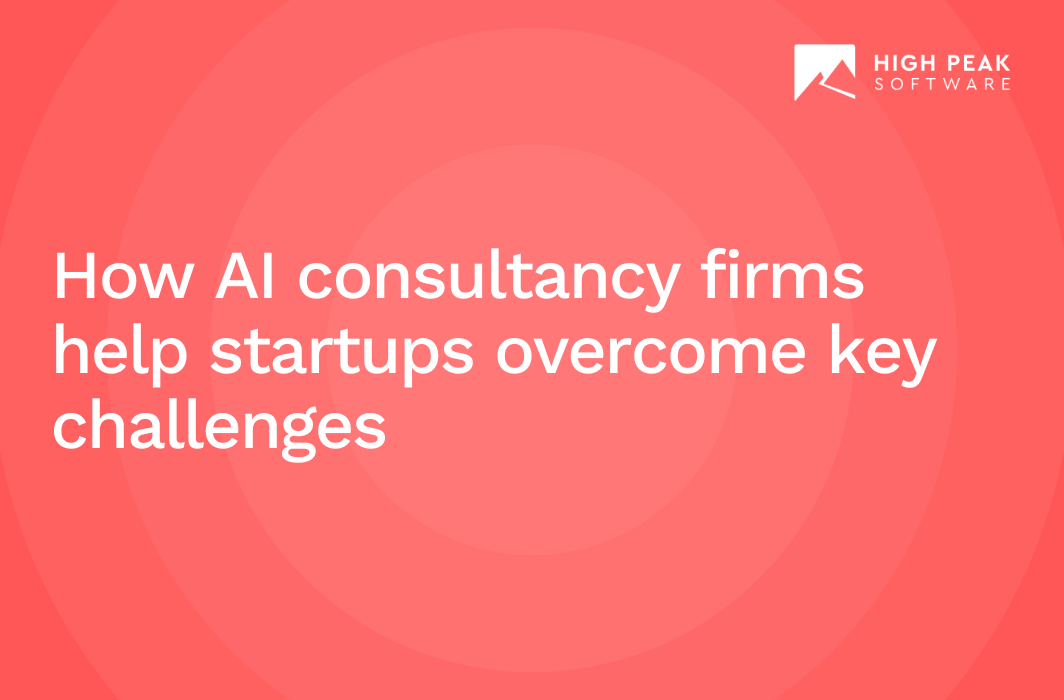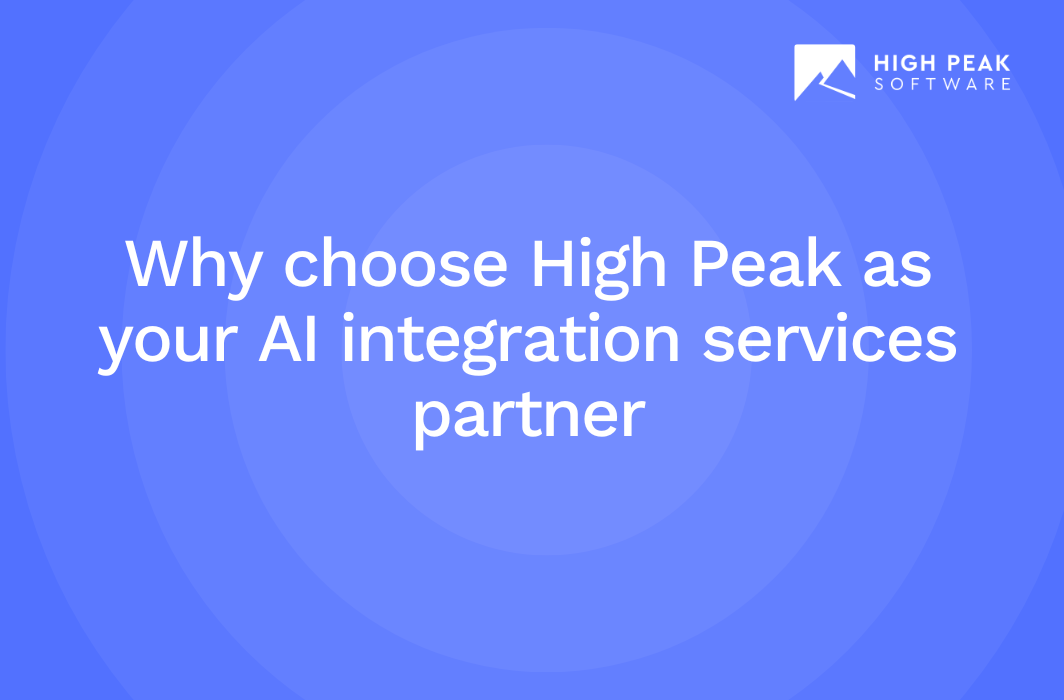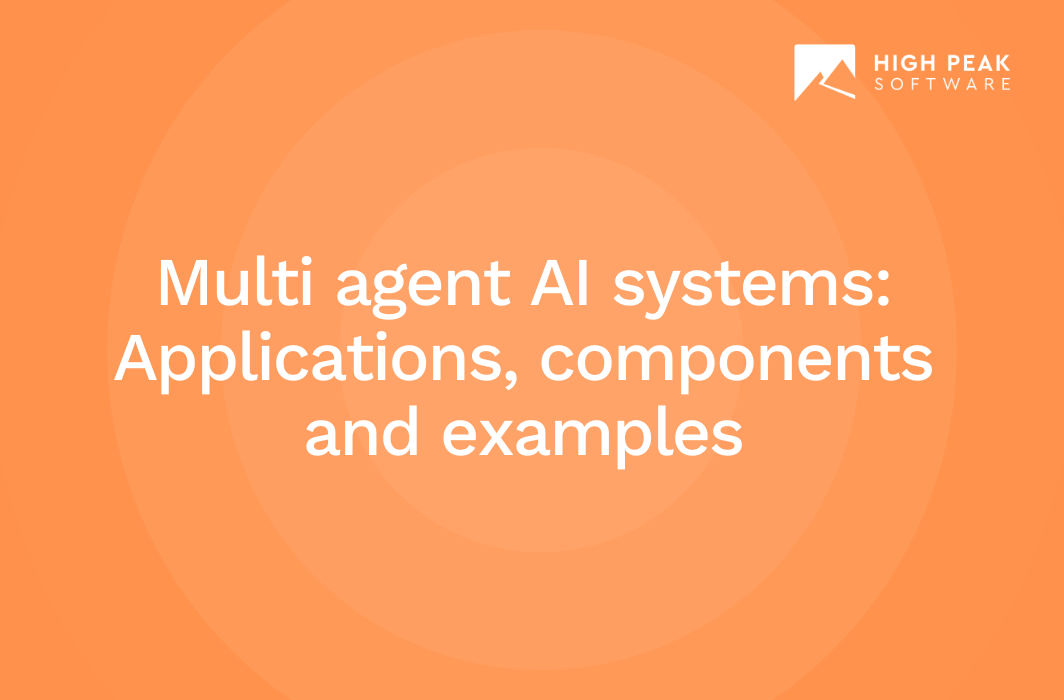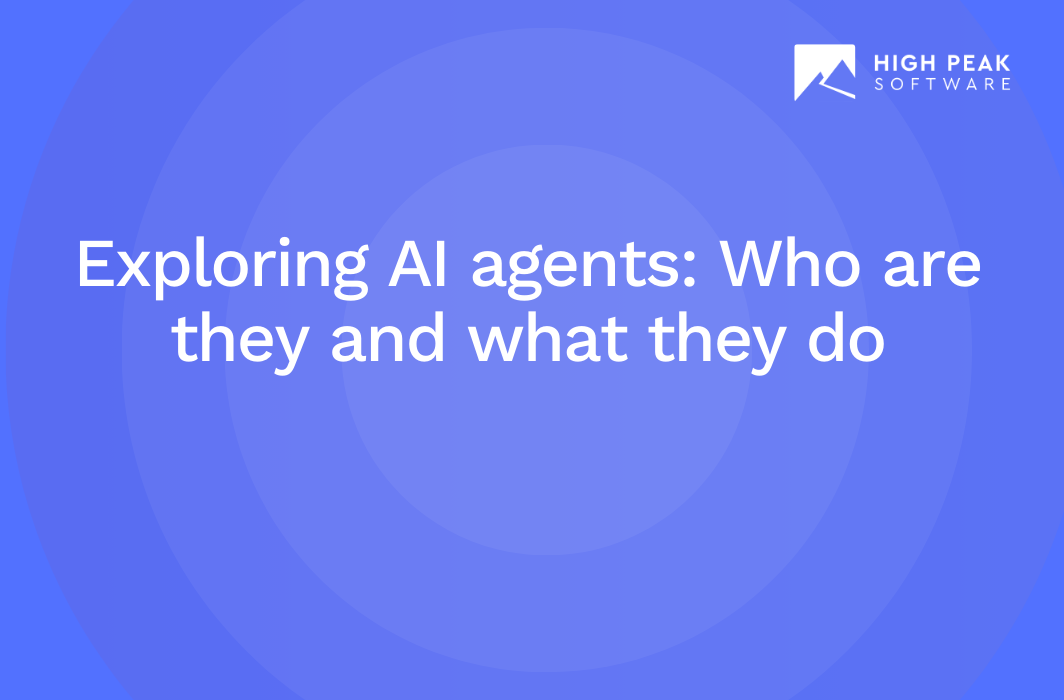What is AI in data integration and why is it important?
Ayaan Bhattacharjee
Content Writer
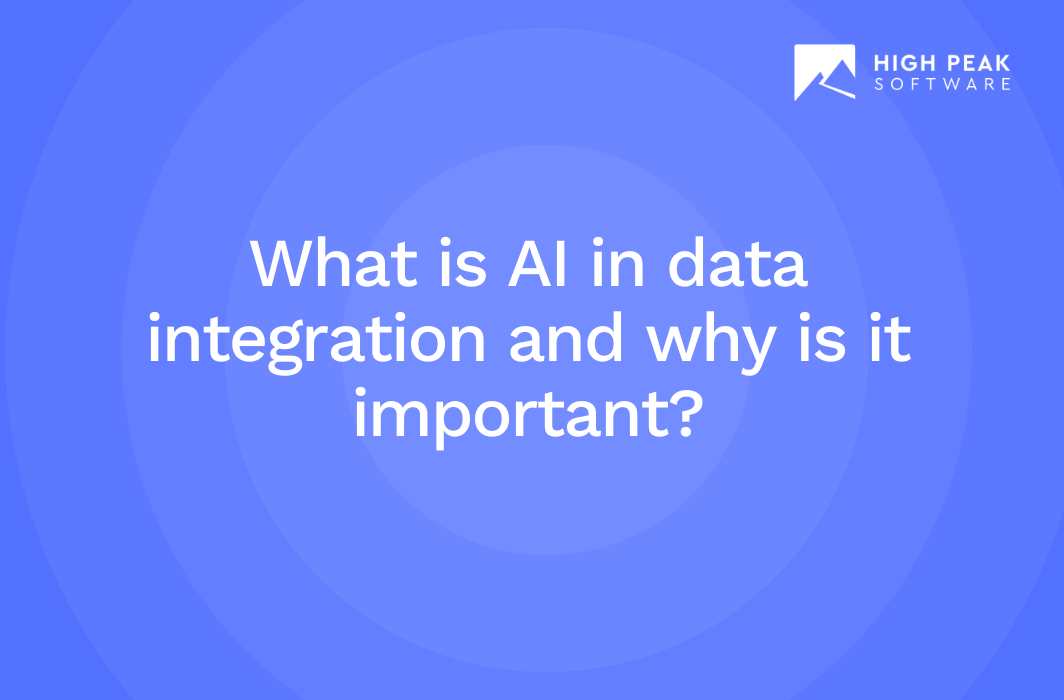
Table of Contents
- What is data integration?
- What is AI data integration?
- The importance of merging data integration and AI in today’s business environment
- Key benefits of leveraging AI for superior data integration
- State-of-the-art data integration technologies
- Key data integration techniques for today’s businesses
- Exploring the perks of AI integration in business
- The strategic edge of AI-powered data integration
- Choose High Peak and embrace AI integration in business today
Paying attention to AI data integration is no longer optional. Significantly, 75% of IT leaders are now proactively setting explicit AI and automation strategies. This commitment highlights the growing recognition of AI integration’s transformative power. It wields significant influence within business operations, guiding corporate innovation.
Also, it sharpens the competitive edge in our data-driven landscape. Given its undeniable impact, AI integration in business has become indispensable. Also, this underscores the need for High Peak, the best AI integration services partner, to achieve your goals. Let’s understand more about AI data integration below!
What is data integration?
Data integration is the process of combining data from different sources into a single, unified view. This involves collecting data from various databases, systems, or applications, which may be in different formats or structures. The goal is to create a coherent, comprehensive dataset that can be used for analysis or decision-making.
What is AI data integration?
AI data integration is a sophisticated process where AI technologies are used to combine data from different sources, formats, or structures. This is done into a unified, coherent dataset. It involves machine learning algorithms and natural language processing. These technologies automatically identify, extract, and harmonize the data, ensuring it’s accurate and readily available for analysis.
The importance of merging data integration and AI in today’s business environment
In an era where data is the cornerstone of strategic decision-making, the symbiosis of AI data integration within business operations cannot be overstated. Also, it represents an upgrade and a fundamental shift in how data ecosystems operate. Businesses unlock unparalleled operational efficiency, data precision, and agility by weaving AI into the fabric of data integration strategies. Let’s see the details below:-
Enhancing operational efficiency and speed through AI
AI data integration transcends the traditional boundaries of data handling. It automates the synthesis of disparate data sources, reducing manual input and potential errors. Also, this automation ensures a seamless flow of information. It speeds up data processing, enabling businesses to respond to market changes with agility.
Guaranteeing superior data quality and precision
The role of AI in enhancing data quality is profound. Through AI data integration, businesses can automatically detect and rectify inconsistencies in their data. This process ensures that decision-makers have access to reliable and accurate information, essential for informed strategy development.
Gaining predictive insights with advanced analytics techniques
AI data integration employs sophisticated analytics that transforms raw data into actionable insights. These insights empower businesses to anticipate market trends and customer needs. With this predictive capability, companies can make proactive decisions, positioning themselves ahead of the competition.
AI business integration, through its automation and analytic capabilities, is not just an operational upgrade but a strategic necessity. Consulting and integrating AI into business operations offers a roadmap for sustained success in a data-driven world.
Key benefits of leveraging AI for superior data integration
AI data integration stands as a transformative technology in today’s digital era, merging AI with data management to simplify complex processes. Also, it enhances analytic strategies, with AI development solutions providing essential tools for leveraging AI’s potential. These innovations enable efficient insights from diverse data sources, highlighting their critical role in business evolution.
Facilitating automation and sharpening decision-making
AI data integration automates the extraction and processing of data. This reduces the need for manual intervention and lowers the risk of errors. Automated workflows ensure that decision-makers receive timely and accurate data, enhancing their ability to make informed choices quickly.
Bolstering data security and upholding privacy standards
Security is a paramount concern in data management. AI data integration enhances data security protocols through automated monitoring systems. Also, these systems detect and neutralize potential threats in real-time. Thus ensuring data integrity and compliance with global privacy regulations.
Elevating data intelligence and quality
Integrating AI into business data systems improves the quality of data. AI algorithms are proficient in cleaning, organizing, and validating data. Also, they transform raw data into high-quality information that forms the backbone of strategic business decisions.
Simplifying organizational processes and reporting
AI data integration simplifies complex data environments. It synchronizes data across various sources, providing a consolidated platform for analysis and reporting. Also, this simplification is crucial for efficiency and allows organizations to respond to market dynamics swiftly.
Harmonizing varied data sources for a unified view
AI data integration is pivotal in consolidating disparate data sources. It creates a cohesive framework that offers a comprehensive view of organizational data. This unified view is essential for accurate forecasting and strategic planning.
Refining data extraction and transformation processes
The process of extracting and transforming data benefits significantly from AI data integration. AI enhances these processes by increasing their accuracy and speed, which facilitates quicker turnarounds for analytical projects and operational adjustments.
AI data integration stands as a cornerstone of modern data management strategies. It not only empowers AI integration consulting but also serves as a critical tool in integrating AI into business operations. Also, companies adopting this technology are poised to enjoy increased efficiency, bolstered security, and enhanced decision-making capabilities.
State-of-the-art data integration technologies
AI data integration harmonizes disparate data sources for artificial intelligence applications. Its importance in driving smarter business decisions cannot be overstated. For instance, a retailer might use AI data integration to combine sales data, customer feedback, and supply chain information. This integration helps predict product trends and manage inventory more effectively.
ETL: The backbone of data integration
Consider a healthcare provider using Extract, Transform, and Load (ETL) processes. They extract patient records from various departments, transform this data into a standardized format, and load it into a central system. This process enables AI tools to analyze patterns and improve patient care recommendations.
EII: Unifying enterprise information seamlessly
A multinational corporation may employ Enterprise Information Integration (EII) to offer a unified view of data from its global operations. This allows managers in different countries to access consolidated financial reports. It aids in cohesive strategy planning without disrupting local data storage.
Leveraging APIs for flexible data interchange
An e-commerce platform uses Application Programming Interfaces (APIs) to share customer purchase histories with a tailor-made recommendation engine. This API-driven interchange enables the AI to suggest products based on past purchases. This enhances the customer experience.
Ensuring data consistency with EDR
A financial institution might rely on Enterprise Data Replication (EDR) to keep customer account information consistent across all branches. When an account update occurs in one location, EDR ensures the change is reflected across the board. This accuracy is critical for AI systems managing fraud detection, ensuring they operate on the latest data.
Making data understandable with visualization
A marketing team might use data visualization to interpret consumer behavior data merged through AI data integration. By visualizing this data, they can easily spot trends and patterns. For example, they may notice an unexpected rise in a product’s popularity among certain demographics. This insight steers their strategy accordingly.
These real-life examples showcase the transformative power of AI data integration across sectors. By leveraging technologies like ETL, EII, APIs, EDR, and visualization, businesses can harness AI’s full potential. This allows them to make informed decisions that drive growth and efficiency.
Key data integration techniques for today’s businesses
In AI data integration, innovative techniques and AI in software development revolutionize data management. Expertise involves understanding diverse methodologies, including AI in software development, for effective integration. Now, let’s explore key AI techniques in data integration.
Consolidating data for a unified perspective
Consolidation involves amalgamating data from disparate sources into a single repository, often a data warehouse. This technique, essential in AI data integration, ensures that data is harmonized, reducing redundancy and fostering a coherent analysis landscape. Businesses leverage consolidation to achieve a 360-degree view of their operations. Thus enhancing decision-making and strategic planning.
Empowering data access with data federation
Data federation stands out by allowing access to and retrieval of data from multiple heterogeneous sources without the need for physical consolidation. It creates a virtual database that provides a unified data model. In an AI integration in business, federation enables real-time query processing across various databases. Thus making it invaluable for organizations requiring instantaneous insights without altering the underlying data architecture.
Transforming data for insightful analysis
Data transformation converts data into a format or structure that’s more appropriate for analysis. Methods include normalization, aggregation, and encoding. These processes are vital in preprocessing data for AI models, ensuring that the information fed into AI systems is clean, accurate, and structured. Thereby enabling more sophisticated and insightful analysis.
Propagating data for timely accessibility
Data propagation involves the replication of data from one location to another, ensuring that data updates are reflected across systems. It is crucial for AI business integration, where up-to-date information is paramount for accurate AI predictions and analyses. Techniques like streaming data replication are used to achieve near-real-time updates across distributed databases, enhancing operational responsiveness.
Integrating through middleware for seamless operations
Middleware acts as a bridge between different applications or data sources, facilitating their communication and data exchange. In the context of AI data integration, middleware supports the seamless flow of data across diverse systems. Thus ensuring that AI models have access to necessary data without compatibility issues, thereby streamlining operations.
Architecting a robust data warehouse
The design and implementation of a data warehouse is a foundational technique in AI data integration. A well-architected data warehouse not only consolidates data but also structures it in a way that is optimized for query and analysis. Thus making it an indispensable resource for data-driven AI applications.
Manual data integration: When and where it still matters
Despite the push towards automation, manual data integration remains relevant. It is particularly crucial in scenarios requiring human judgment for resolving disparities in data interpretations, ensuring data quality, or in cases where automated processes are not feasible. Understanding when and where to apply manual intervention exemplifies deep expertise in AI data integration, balancing technology with the irreplaceable nuances of human oversight.
Exploring the perks of AI integration in business
Harnessing the power of AI data integration, guided by a comprehensive AI strategy, becomes crucial for success in various domains. By integrating AI strategy into business operations, organizations unlock innovation and efficiency. Let’s see the details:-
Innovating products and services with AI data integration
AI data integration not only automates routine tasks but also lays the foundation for inventive product development. By processing vast amounts of data, AI reveals trends that inform the creation of pioneering products and services. This bench-to-market journey is elevated through the custom solutions AI provides, enabling businesses to stand out in competitive markets.
Elevating workforce capabilities with AI business integration
Investing in AI business integration leads to a workforce augmented with technology. It empowers employees with real-time data and predictive analytics for improved decision-making. Well-implemented AI integration consulting services can also facilitate targeted training programs, enhancing the skill sets of employees to navigate AI-enhanced environments.
AI as a strategic partner in decision-making
Incorporating AI data integration turns technology into a boardroom advisor. The deep analytical prowess of AI aids in high-stakes decision-making. It offers foresight and data-driven recommendations that are crucial for navigating market complexities. Thus, AI acts not as a replacement but as a complement to human leadership.
Quality assurance maintained through AI
AI’s precision is a keystone in maintaining product and service quality. By monitoring operational parameters in real time, AI predicts potential issues before they arise. This preemptive approach upheld by AI data integration ensures high standards and safety protocols.
Tailoring customer experiences with integrated AI
AI data integration personalizes customer interactions in unprecedented ways. Leveraging AI allows businesses to understand and predict customer preferences, providing tailored experiences that enhance satisfaction and loyalty.
Sector-specific solutions courtesy of AI
Industries ranging from healthcare to finance are realizing the bespoke benefits of integrating AI into business. In healthcare, for example, AI improves patient care through predictive diagnosis. Each industry’s unique challenges are mitigated using tailored AI solutions, driving sector-specific advances.
The strategic edge of AI-powered data integration
Data lies at the heart of AI’s transformative potential in business. Implementing strategic AI data integration is more than a technological upgrade; it’s a business imperative for actionable intelligence. Let’s see the strategic importance of AI data integration by companies offering AI consulting services smoothly:-
The importance of efficient data integration strategies
An efficient AI data integration strategy sets the groundwork for business intelligence capable of propelling growth. It aligns with organizational goals and the specific demands of the business, ensuring relevant, actionable insights are always at hand.
Selecting the optimal data integration spectrum
Choosing the right data integration approach is crucial for everything from batch to real-time processing. Decisions between cloud-based and on-premise data solutions depend on the specific business needs and scalability goals, affecting how data is handled and value is extracted.
Data manipulation unleashed: ETL versus ELT
A clear understanding of ETL and ELT approaches is vital for effective AI data integration. These data processing techniques handle the critical tasks of consolidating, transforming, and managing data. The choice between ETL and ELT impacts how quickly and effectively businesses can respond to data-driven insights. For better understanding:
ETL and ELT are two methods used to transfer data from one place to another and prepare it for analysis. Here’s the simple explanation:
ETL – Extract, Transform, Load:
- Extract: Take data out of a source (like a database).
- Transform: Clean, organize, or change the data so it’s ready to be analyzed (this happens in a separate intermediate area).
- Load: Put the cleaned and organized data into a target destination (like a data warehouse).
ELT – Extract, Load, Transform:
- Extract: Take data out of a source (just like ETL).
- Load: Put the data into the target destination right away, without cleaning or organizing it first.
- Transform: Clean, organize, or change the data after it’s been loaded into the target destination.
So, the big difference is when and where you clean and organize the data. ETL does it before the data enters the data warehouse, while ELT does it after the data is already there. ELT can often be faster because modern data warehouses are powerful enough to handle the transformation process efficiently.
Data warehousing and visualization: Advancing insight extraction
Building robust data warehousing infrastructures and applying advanced visualization techniques is fundamental. It enables businesses to contextualize and interpret complex data sets. When brought together, they form a powerhouse of insight crucial for deciding business trajectories.
The dynamic nature of real-time data processing
Embracing real-time data processing through AI data integration allows businesses to react swiftly to market changes. Immediate insights enable dynamic decision-making and a proactive stance in business operations, ensuring a competitive edge.
Strengthening the data ecosystem with IoT and APIs
The integration of Internet of Things (IoT) devices creates a seamless data exchange network. Adding to this ecosystem are API integrations that enhance accessibility and analysis capabilities. This interconnected data framework is pivotal for insightful, AI-driven business strategies.
Implementing AI data integration is not a mere technological trend but a definitive step toward smarter, more responsive business practices. As AI continues to evolve, its role in interpreting data and driving business success becomes all the more vital, crafting a future where business intelligence is not just informed but inspired by integrated AI solutions.
Choose High Peak and embrace AI integration in business today
Unlock the potential of AI in data integration with High Peak’s tailored AI services. Our team specializes in AI product development, ensuring your business leverages the full power of AI integration.
Elevate your operations and drive innovation by booking an AI consultation with our experts today. Discover why AI is crucial for your success in the digital era.
